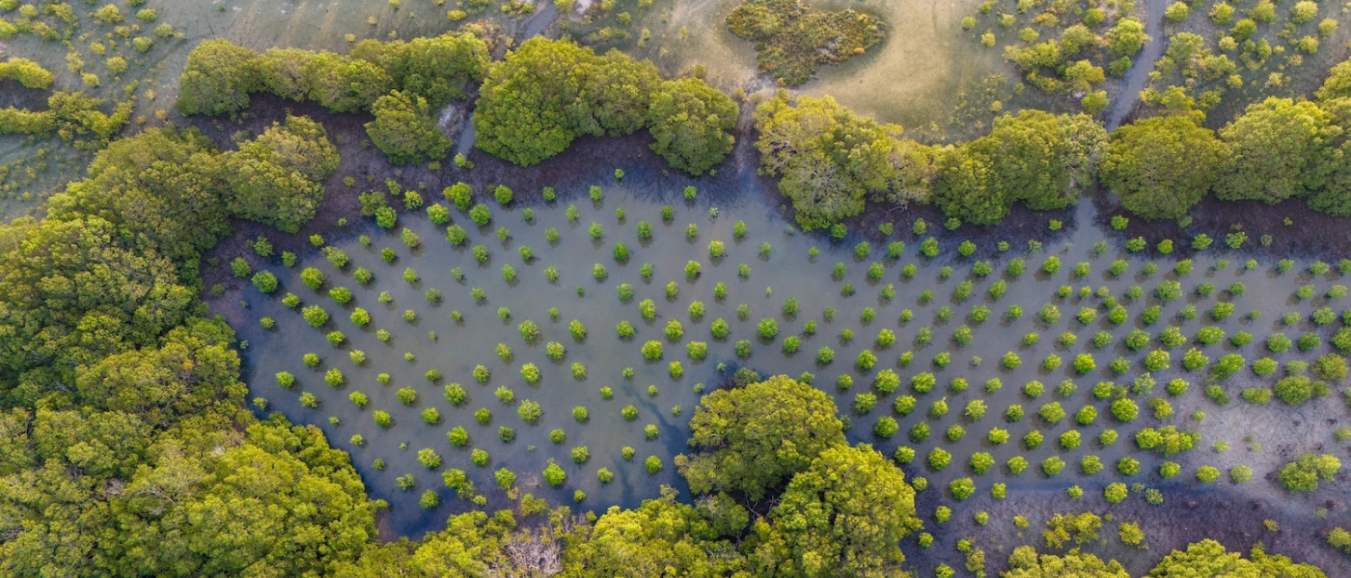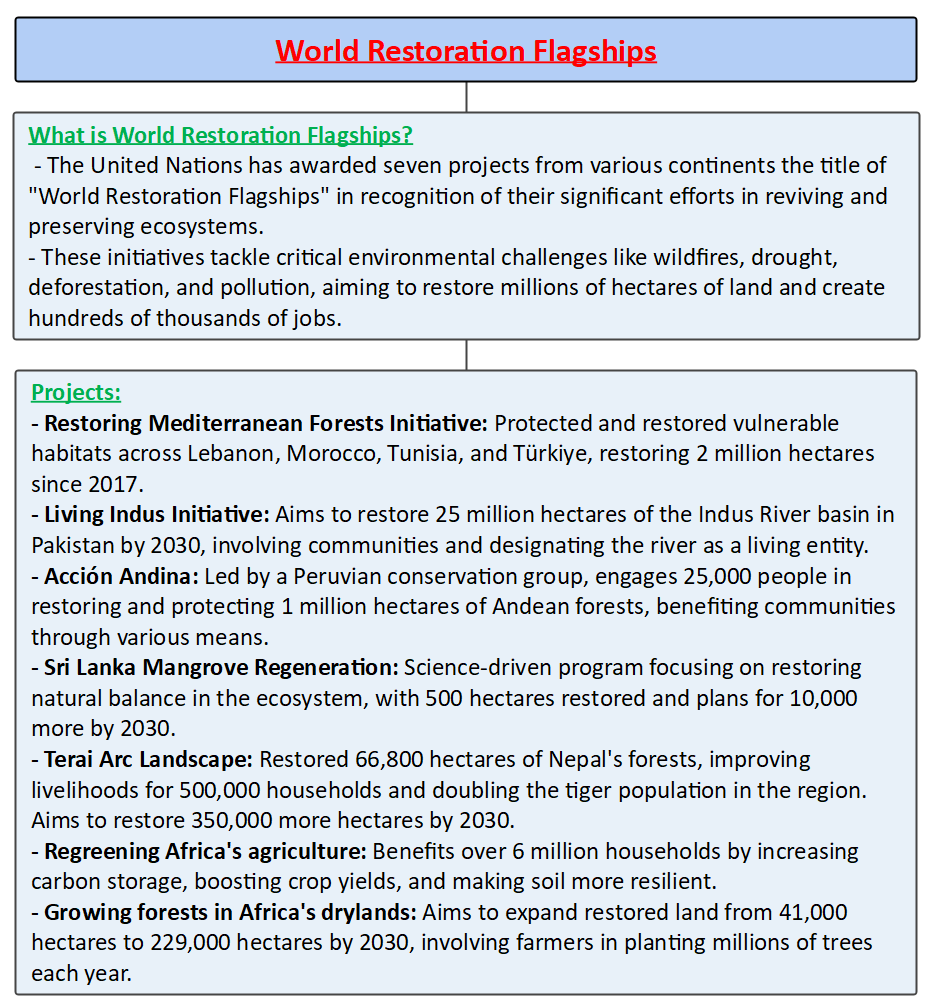





Copyright infringement not intended
Picture Courtesy: https://www.unep.org/news-and-stories/video/unep-executive-director-announces-seven-new-un-world-restoration-flagships
Context: The United Nations Environment Programme (UNEP) and the Food and Agriculture Organization (FAO) have jointly identified seven initiatives worldwide as World Restoration Flagships, aiming to address ecosystem degradation caused by wildfires, drought, deforestation, and pollution through restoration efforts.
About World Restoration Flagships
7 World Restoration Flagships
|
United Nations Environment Programme (UNEP) |
●UNEP was established in 1972 and is the leading global environmental authority within the United Nations system. ●It focuses on a wide range of environmental issues, including climate change, biodiversity, pollution, sustainable consumption and production, ecosystem management, and more. It plays a coordinating role in various environmental conventions and initiatives. ●It collaborates with governments, non-governmental organizations, the private sector, and other UN entities to address environmental challenges collectively. It also provides scientific assessments and policy advice to inform decision-making. ●It produces regular reports and assessments, including the Global Environment Outlook (GEO), to provide comprehensive analyses of the state of the environment and emerging environmental issues. |
|
Food and Agriculture Organization (FAO) |
●It was founded in 1945 and is a specialized agency of the United Nations. It is dedicated to eradicating hunger, achieving food security, and promoting sustainable agriculture. ●FAO's primary mandate is to raise levels of nutrition, improve agricultural productivity, enhance the lives of rural populations, and contribute to the growth of the world economy. ●It works across various areas related to food and agriculture, including agricultural development, fisheries, forestry, land and water resources, climate change, food safety, and nutrition. It provides technical assistance, policy advice, and capacity-building support. ●It establishes international standards for food and agricultural products through the Codex Alimentarius Commission, ensuring the safety, quality, and fairness of the global food trade. ●It collaborates with governments, other UN agencies, non-governmental organizations, and the private sector to implement its programs and projects. It works towards achieving the Sustainable Development Goals (SDGs) related to food security and sustainable agriculture. |
Conclusion

|
PRACTICE QUESTION Q. Technological advancements like carbon capture and storage (CCS) are often touted as solutions to climate change. However, these technologies come with their own set of ethical, social, and environmental risks. How to ensure that these technologies are developed and deployed responsibly, considering potential downsides and unintended consequences? Answer Structure: ●Start with a brief introduction that explains what carbon capture and storage (CCS) is, why it is considered a potential solution to climate change, and what are the main challenges and controversies associated with it. ●Provide some examples of current or planned CCS projects around the world, highlighting their benefits and drawbacks, as well as the views and interests of different stakeholders involved or affected by them. ●Discuss some of the ethical, social, and environmental risks of CCS, such as the uncertainty of long-term storage, the possibility of leakage or sabotage, the impact on local communities and ecosystems, the trade-offs between mitigation and adaptation, and the moral hazard of relying on technological fixes. ●Analyze some of the existing or proposed frameworks or guidelines for responsible development and deployment of CCS, such as the London Protocol, the IPCC Special Report on CCS, the UNFCCC Technology Mechanism, or the European Union CCS Directive. ●Conclude with a summary of the main points and a critical reflection on the role and limitations of CCS in addressing climate change, as well as some recommendations or suggestions for future research or action. |











© 2024 iasgyan. All right reserved